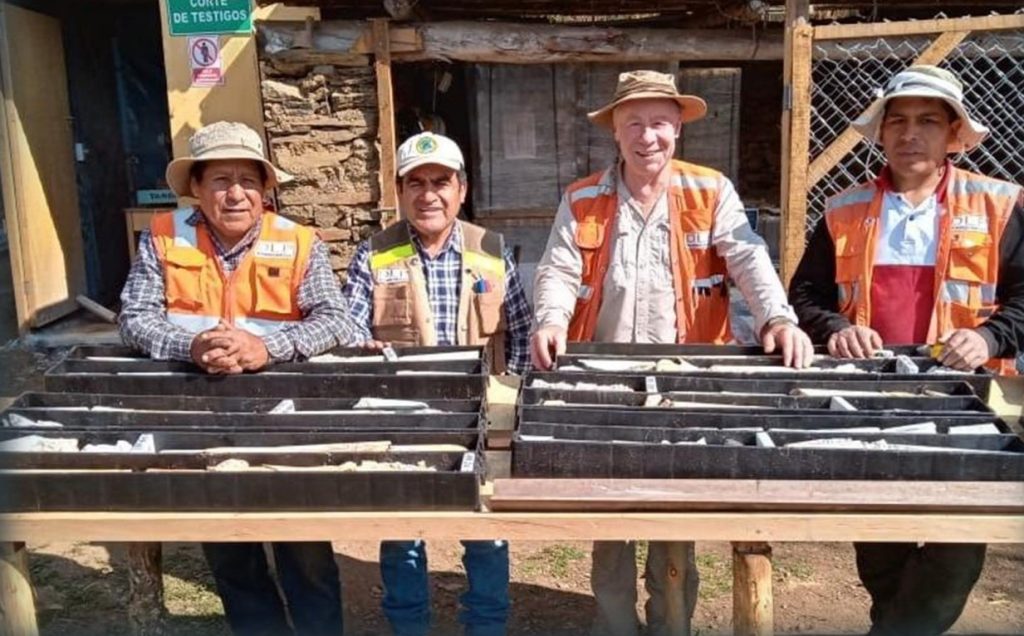DLP Resources drills 0.72% CuEq over 617.55 metres at Aurora, Peru

DLP Resources Inc. [DLP-TSXV; DLPRF-OTCQB] has received complete drill results for the sixth hole, A23-006, on the 100%-optioned Aurora porphyry copper-molybdenum project in southern Peru.
Results for the first five drill holes, A22-001, A22-002, A22-003, A23-004 and A23-005, were released December 5, 2022, January 5, 2023, May 2, 2023, and June 1, 2023.
Highlights: Drillhole A23-006 intersected significant molybdenum-copper mineralization throughout the hole to a depth of 708.55 metres where it ended in very good molybdenum mineralization. The most significant mineralized intervals included 0.72 % CuEq (copper equivalent) over 617.55 metres (0.17% Cu, 0.148% Mo and 1.82 g/t Ag) from 91.00 metres to 708.55 metres, including 0.82% CuEq over 36.00 metres (0.62% Cu, 0.031% Mo and 9.10 g/t Ag) from 91.00 metres to 127.00 metres; 0.80% CuEq over 387.55 metres (0.07% Cu, 0.205% Mo and 0.74 g/t Ag) from 321.00 metres to 708.55 m; 1.01% CuEq over 208.55 metres (0.08% Cu, 0.260% Mo and 0.86 g/t Ag) from 500.00 metres to 708.55 metres..
Results from drillhole A23-006 which was drilled approximately 448 metres WSW of A22-003 confirms extensive copper-molybdenum mineralization across the northwestern extent of the Aurora project. Once again, the hole ended in very good molybdenum mineralization.
Ian Gendall President and CEO commented: “We continue to intersect very encouraging copper-molybdenum mineralization at Aurora and the downdip extension is open in all directions. Drilling is ongoing to the south of A23-006 and we are currently drilling A23-008. Assay results are awaited for A23-007.”
The Aurora Project as an advanced stage porphyry copper-molybdenum exploration project in the Province of Calca, SE Peru. The Aurora Project was previously permitted for drilling in 2015 but was never executed. Thirteen historical drill holes, drilled in 2001 and 2005 totaling 3,900 metres were drilled over an area of approximately 1,000 metres by 800 metres, cut significant intervals of copper and molybdenum mineralization. From logging of the only three remaining holes DDA-01, DDA-3A and DDA-3 and data now available, it appears that only three of the 13 holes tested the enriched copper zone and only one hole drilled deep enough to test the primary copper and molybdenum zone.
Salient historic drill hole data of the Aurora Project includes 190 metres of 0.57% Cu, 0.008% Mo in DDA-1 with a high-grade intercept of 20 metresof 1.01% Cu related to a supergene enrichment zone of secondary chalcocite; 142 metres of 0.5% Cu, 0.004% Mo in DDA-3; 71.7 metres of 0.7% Cu, 0.007% Mo in DDA-3A. One of the historical holes ABC-6 drilled on the edge of the system intersected 78 metres of 0.45% Cu and 0.107% Mo.
A review of the historical drilling indicates that the majority of the 13 holes were drilled in the leached and partially leached zones of the porphyry system. Ten of the 13 holes never fully tested the oxide and secondary enrichment zone and/or the primary copper zone at depth encountered in DDA-01. Copper-molybdenum mineralization is hosted by quartz-feldspar porphyries intruded into slates-hornfels and pelitic sandstones belonging to the Ordovician (439 – 463 ma) Sandia Formation.
